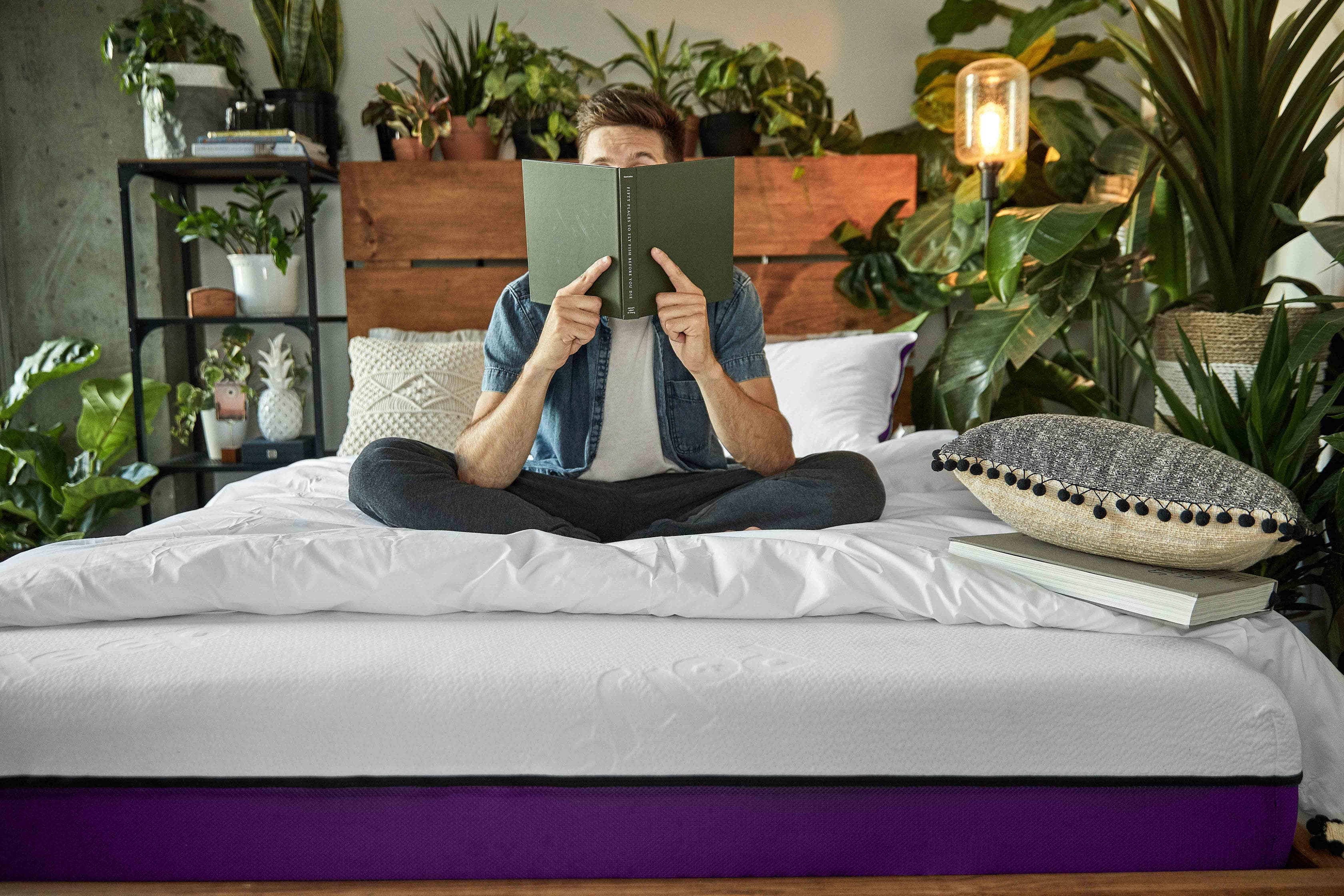You wake up one morning with a terrible backache. Your bed is now as comfortable as a cot, except that you are at home. So you plan to change it, and consider getting a foam mattress, a type of mattress that your colleague Cathy keeps raving about at the office, so much so that she radiates rest every morning. You want to learn more about it, and you google: what materials are used? How are these mattresses made? These are the questions you ask the all-knowing search engine. And boom, you happen upon our guide on how foam mattresses are made!
« Ok Google, what kind of foam is used in foam mattresses? »
And re-boom! Google says: “There is not just one type of foam, there are many different types used for foam mattresses.” And as always, Google is right. Here are the different types of foam used in foam mattresses and their properties!Memory Foam
The first, and certainly the most promoted at the moment, is memory foam. This type has the particularity of reacting to temperature and pressure to perfectly fit the morphology of the person during their sleep. The only problem: if the room temperature is low, the foam will be hard as stone while it warms up in contact with your body. In addition, it tends to store your body's heat; you'll feel way too warm in the summer if it's not infused with thermoregulating gel!
Latex foam and high-resilience foam
An alternative that overcomes the disadvantages of memory foam is foam made of latex. It offers all the advantages of memory foam, but with the particularity of being hypo-allergenic, in addition to its thermo-regulating properties. The result: no allergies, and you always sleep at the right temperature! Another type of highly breathable foam is high-resilience foam, which offers a high level of breathability thanks to its cell structure, which also allows for excellent moisture absorption.

Polyurethane foam and polyether foam
Next come polyurethane foams. These, as already mentioned in our Ultimate Guide to Foam Mattresses, are the ones with the best price-performance ratio due to their high durability, linked to the fact that the density of this type of foam is high to very high. They also ensure a first-rate long-term support with the particularity of strongly reducing the transfers of movement. Let us also mention a more economical alternative but with a shorter lifespan: polyether foam, with lower density.

« Ok Google, what are the steps involved in making a foam mattress? »
To which Google replies: “Hang on to your hat!” And once you learn the different steps to build a foam mattress, you'll understand why!
-
Choosing the materials for the mattress.
This is logically the first step. Trying to choose the materials after you've built the mattress doesn't work! And first of all you have to choose the ticking, which is the fabric covering the whole mattress. Depending on the manufacturer, it can be made of different materials such as linen, cotton or bamboo viscose. Others will turn to synthetics, for example with polyester ticking. There will also be the choice of the different types of foam that make up the layers of the mattress, which will depend on the range level of the mattress (and therefore the price), and the properties required for each of them.
-
Cutting the fabric to the right dimensions.
This is a crucial step. This consists of cutting two pieces of fabric, called “panels”. During this operation, the most important thing is to make sure that each of them is exactly the right size for the size of your mattress, otherwise it's going to get complicated!

-
Processing and cutting the foam and then cutting out the quilting elements
Whatever the type of foam to make, the process is the same: it's like making a cake! In other words, at Polysleep, the people in charge of designing our foams could have been pastry chefs.
Joking aside, the foam is first poured into a large tray, then placed in a gigantic oven to bake it, which will gain in volume before cooling down. Once baked, the foam is cut into sections the size of the mattress. The properties of the foam will vary according to the ingredients added to the foam “recipe”, which will give it a higher or lower density. Next comes the cutting of the various parts that make up the padding, such as wadding or contact foam.
But at Polysleep, for the Polysleep and Zephyr models, we add an extra twist to further increase the mattress's longevity, with ultra-firm contours that prevent any premature sagging of the layers! This is accomplished with a contour near the edges of all foam layers to reinforce the mattress structure.

-
Assembling the different parts of the mattress.
-
Pre-closing the mattress.
-
Mattress tufting.
-
Modeling the mattress.
When there's more, there's more! Don't worry, this is the last step. It consists of shaping the mattress, by making beads on the “edges” of the mattress. These, called “tamping lines”, are used to obtain the final shape of the mattress, and are made with a large needle (15 cm!). But far from crossing the mattress from one edge to the other, the needle will only get a little foam on the contour to make a frame for the mattress along its entire length.
Voila! You now know all the materials that can make a foam mattress and the steps of its manufacture! And you will have understood it, it's a heavy duty job! So trust Polysleep for your mattress in a box and order yours directly online at Polysleep.ca! Once delivered directly to your home, all you have to do is unpack it, wait for it to take its shape, and it's done! You will be able to sleep in it the same night. Go to the Polysleep website now to place your order!












